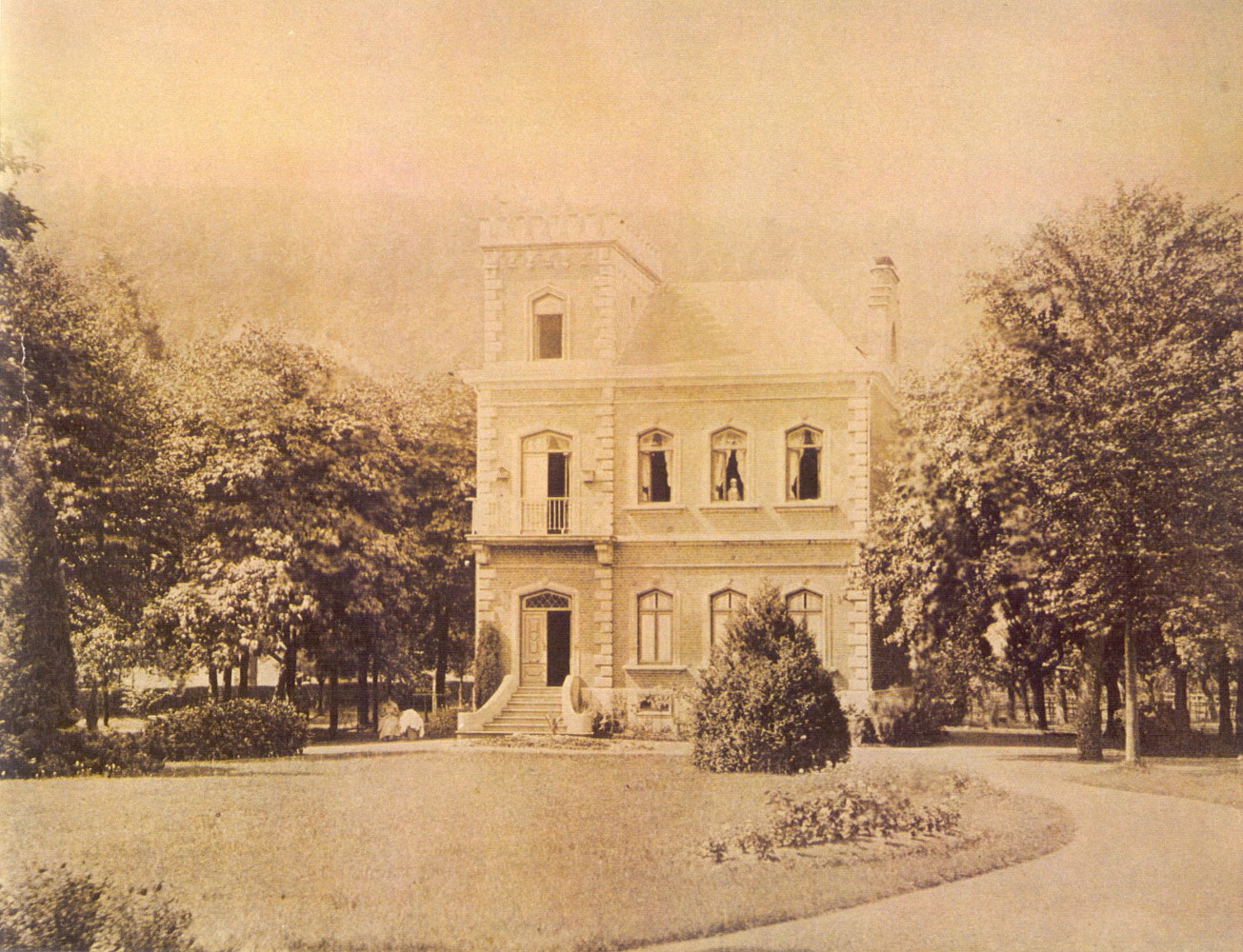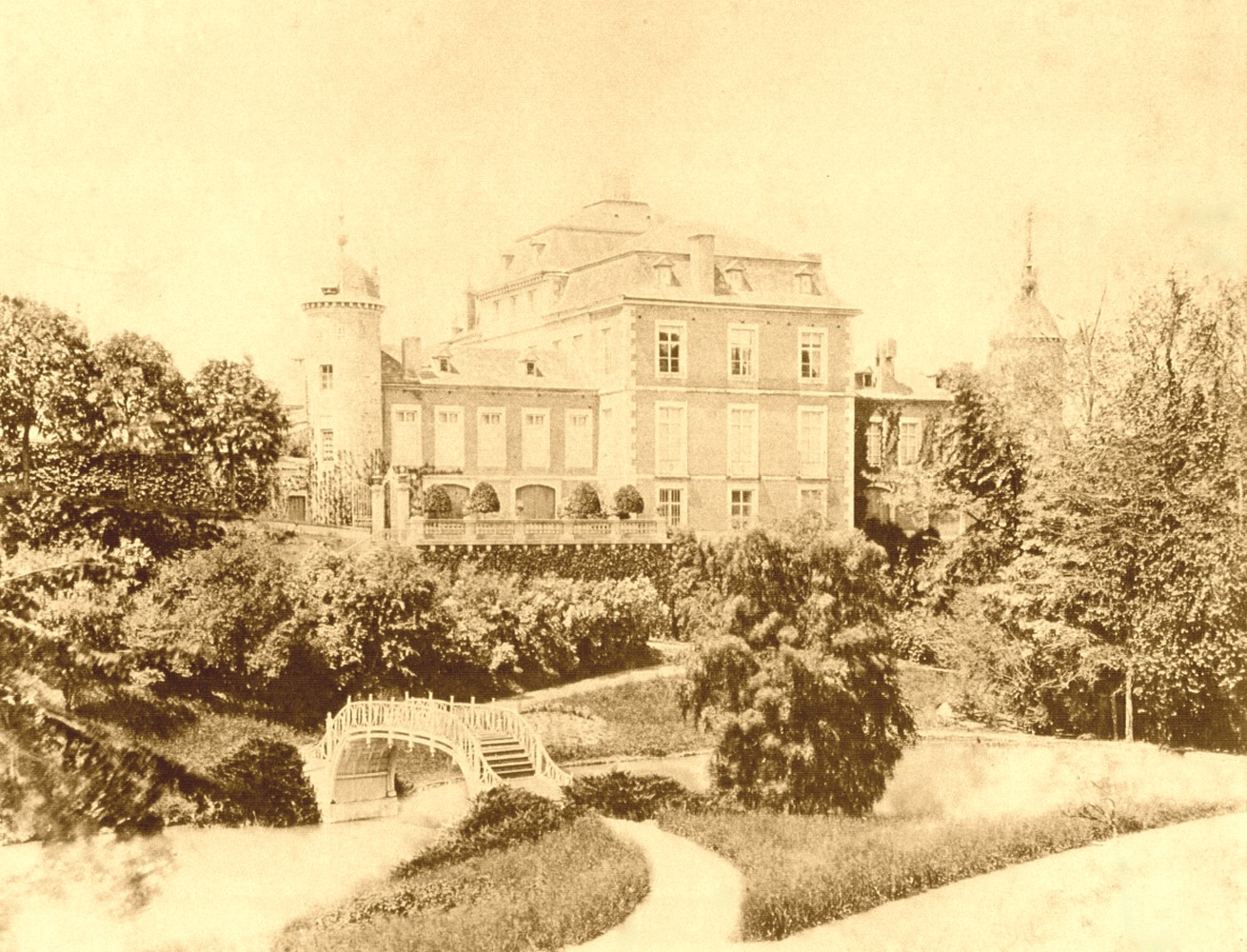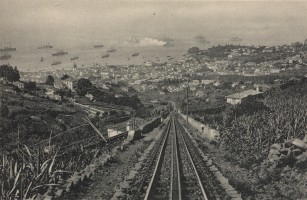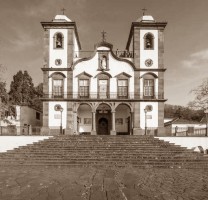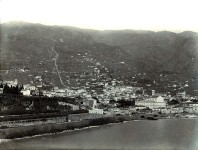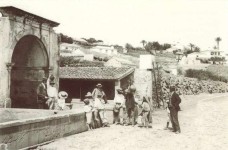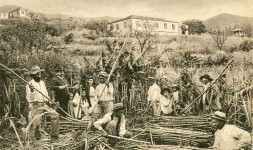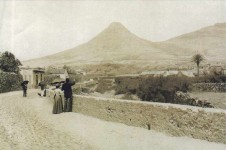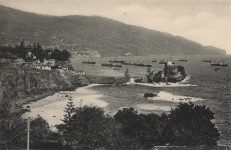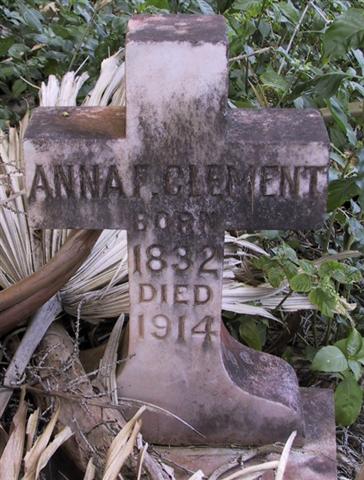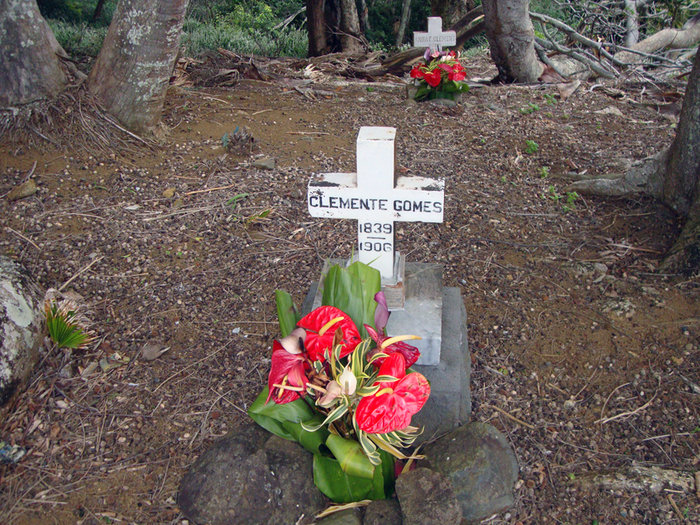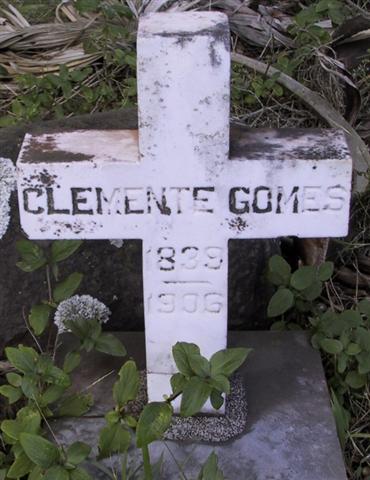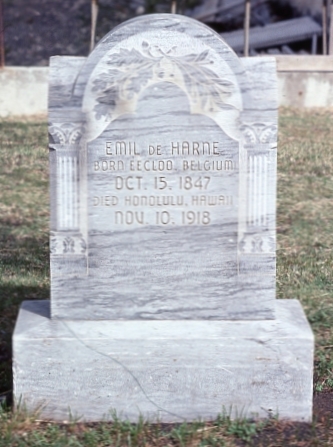|
Remembrances of Mary Walsh and Josephine Jones
| ||||||||||||||||||||||||||||||||||||||||||||||||||||||||||||||||||||||||||||||||||||||||||||||||||||||||||||||||||||||||||||||||||||||||||||||||||||||||||
|
|
Frances' parents Clemente Gomes Camacho and Ana de Jesus Ferreira were married on Feb. 11, 1866 in the church of Nossa Senhora do Monte, as recorded in Book 1608, Sheet 5 v.o of the Monte parish register. This is the Church of "Our Lady of the Mount" that Francisca remembered so well from her childhood, and it is the main church of the parish. Ana and Clemente had four chuildren, all of whom were baptized in Our Lady of the Mount.
|
|
||||||||||||||||||||||||||||||||||||||||||||||
| * Different birthdates for Maria of May 12, 1866, Manuel of Aug. 12, 1871 and Joao of June 12, 1873 appear on their tombstones.
Most likely, the birth dates on their baptism records, which are the dates shown above and right, are more accurate. | |||||||||||||||||||||||||||||||||||||||||||||||
On the way to this church, there was a small, miraculous statue, "Nossa Senhora do Monte" near a pond. People believed that the waters were healing. There were many trees, birds, and running water near the statue, which gave a child an awesome feeling. This pond is probably in the nearby town of Terreira da Luta where a shepherd girl in the 1400s found a tiny statue of the virgin said to have miraculous powers. Today this shepherd girl is venerated as the Lady of the Mount, the patron saint of Madeira, and the tiny statue she found sits high above the altar of the church that bears her name.
Mama’s home was near the main highway, which apparently was in the parish of São Roque on the west side of Monte. It was made of stone. The house was very large and had been purchased from priests by her maternal grandfather and grandmother, John (João) Ferreira and Maria Luisa Ferreira, who had been married in Monte in 1819 . The house had two floors. The lower floor was once used as a store by her grandfather. At the back of the store was the kitchen with stairs leading to the second floor where the family lived. There was a balcony in front of the second floor with stairs leading to it. There was a library. It is believed to have been a priest’s home. Before her father left for Hawaii, he sold the place; and the man who purchased it, rebuilt it. In the garden, there was a majestic oak tree, as well as a chestnut and a pear tree, many plum trees, red rose bushes, and many other plants. Also, there were jack rabbits who used to hop out from under rocks and bushes and frighten mama.
Her father, Clemente Gomes Camacho, somehow did not cultivate this land. He farmed on his brother-in-law’s property, which was three miles away. This uncle, Augustine (Agostinho) Ferreira, owned a large piece of land. He was seldom home since he spent most of his time in the West Indies where he owned a store. He traded with the natives in a place named Marira (most likely Demerara, Guyana), which was somewhere near South America.

A growing economy in the Hawaiian Islands created a demand for laborers to work the sugarcane plantations, and importation of Chinese workers began in 1852 to replace native workers who were becoming increasingly unreliable. However, the Chinese were soon accused of gambling, prostitution and opium use, and the search began for alternate sources of labor. Jason Perry (Jacinto Pereira), an island local who served as the Portuguese Consul, suggested in 1876 to the Planters Society, the predecessor to the Hawaii Sugar Planters Association, that they look for workers in Madeira and the Azores, small, subtropical, volcanic islands located in the middle of the Atlantic Ocean. Sugarcane has been cultivated in these previously unihabited isles since the mid 1400s, when they were settled by Portuguese colonists, and Perry argued that these islanders would be ideal workers for the cane plantations. The Planters Association agreed and began recruiting Portuguese workers first from Madeira, then the Azores, beginning in 1878, and imported nearly 12,000 of them over the next 9 years. Whereas contracts for the Chinese workers that preceeded these new recruits had stipulated single men only, the Portuguese were allowed to bring wives and families, which the plantation owners felt would provide stability.
When Mama was about ten, her parents, Clement Gomes and Anna Ferreira Camacho, sold their bakery and winery near Funchal and left Madeira. Most likely Clement tended grape vines grown on his brother-in-law Agostinho's land, but a blight in the mid 1870s decimated the vinyards of Madeira, which left little incentive for Clemente and Agostinho to stay.
Clement and Anna and their four children--two boys and two girls--sailed for Hawaii on the British ship Ravenscrag. Mama remembers that the Ravenscrag had 419 souls on board: 176 were children. The family is listed in ship passenger arrival records stored at the archives in Honolulu, Oahu (Card no. 137, Draiver Indicator - Portuguese Arrivals).
RAVENSCRAG - sailed from Funchal, Madeira on April 22, 1879 and arrived in the whaling port of Honolulu, Hawaii on August 23, 1879. This British sailing vessel was reported in the local newspaper, the Pacific Commercial Advertizer to have 423 immigrants, but the ships manifest lists 421, and Frances remembered 419, which matches the official report of the Harbor Master (133 men, 110 women, 176 children).
NATURALIDADE - Ilha da Madeira
PROFISSAO - Trabalhador
OBSERVACOES - Clemente Gomes Camacho 39 annas, Maria de Jesus 48 annas, filhos: Maria 12, Francisco 10, Manuel 7, e João 4 annas.
There were many relatives with them. Grandfather Camacho had three persons under his care. One was a woman whose husband abandoned ship when it left the harbor of Funchal, Madeira, and her son. She was related to grandfather by marriage. These relatives were probably 20-year old Amelia Augusta Pereira of São Roque and her infant son João (John), as they are the only mother and son pair listed on the ships passenger manifest. Also, the passport of Amelia's husband Manuel Joaquim Correia that is on file in the Madeira Government Archives indicates that he was supposed to be on board but was absent when the ship arrived in the Sandwich Islands (Hawaii). Please click here to learn more about their story. Another relative of Clement's on board ship was the 18-year old daughter of his sister-in-law Luisa de Jesus Gomes (neé Ferreira). This beautiful girl, whose name was Francisca Gomes, had a stepfather who made the child’s life miserable. So her mother asked her brother Clement to take her with him to Hawaii. Mama and the other children loved this "red head" because she kept them amused on board. The Portuguese counsul, Jacinto Perreira (Jason Perry), took her to his home to help with the housework, and later this beauty married the counsul’s nephew, Manuel Perreira Mendonça (Mendosa) on Jan 31, 1880 in Wailua. The couple sailed to Half Moon Bay, California the next year, where they raised a large family of several children. Francisca, who was born on Oct. 31, 1860 in the Santa Luzia parish of Funchal, Madeira passed away on Feb. 8, 1919 in Milpitas, California. Her husband Manuel, who been born on Jan. 24, 1850 in the Azores, passed away on Jan. 29, 1937 in Sunnyvale, California.
|
|
Another relative on the voyage was Clemente's wealthy brother-in-law and Anna's older brother Agostinho Ferreira, whose land Clemente had farmed in Madeira. Agostinho, who had been baptized on May 18, 1828 in Monte, brought with him his wife Maria Augusta Jesus and their three children - 10-year old Sophia (1869-1925), 2-year old Ephigenia (1877-1957), who also appears as Virginia or Eugenia, and Maria (1879-1909), who was still a baby when the family arrived in the Hawaiian Islands. As with Clemente, Augustine's 1879 passport, with baptism date and parents, is on file in the Madeira Government archives. This passport shows that the names of his parents, who would also be the parents of his sister Anna, were João (John) Ferrieira and Maria Luisa. Further research in the archives shows that Augustine and Anna's parents married in 1819 in Monte. Augustine and his family settled in Makawao on the island of Maui, where in 1883 another daughter Clara was born. They appear in later years to be associated with an area known as Kokomo, which is on the north side of Makawao.
Augustine died sometime before the U.S. census of 1900, when his wife Maria Augusta, who was about 15 years younger than he, is listed as a widow. He is probably the same Augustine Ferreira who died from paralyses (a stroke?) at the reported age of 67 on Sept. 11, 1893 in Honolulu, and is buried in the Puea Cemetery in the Kalihi district of Honolulu. However, his grave is now unmarked, as 1903 is the date of the oldest surviving tombstone in the cemetery with an inscription that can still be read. His wife Maria, who we think was born about 1844 from various documents, was still living in Kokomo during the 1910 U.S. census, but she does not appear in the 1920 census, which indicates that she may have died before then. However, there is a tombstone in Saint Josephs Catholic Cemetery on Maui for a Maria A. Ferreira with the dates 1837-1929, and despite the contradiction in dates, this may very well be her grave. The daughters of Augustine and Maria married, had children, and are represented today by many descendants, most of whom eventually ended up in Honolulu. Thus, Frances de Harne had several cousins in the islands, as well as several nieces and nephews from her two brothers.
|
|
||||||||||||||||||||||||||||||||||||||||||||||
| *Daughter Maria is actually the oldest, and she was first baptized on Aug. 10, 1865 in British Guiana (Demerara, Guyana).
The baptism shown above from Funchal, Madeira is her second, and is a "term justification" of the first. | |||||||||||||||||||||||||||||||||||||||||||||||

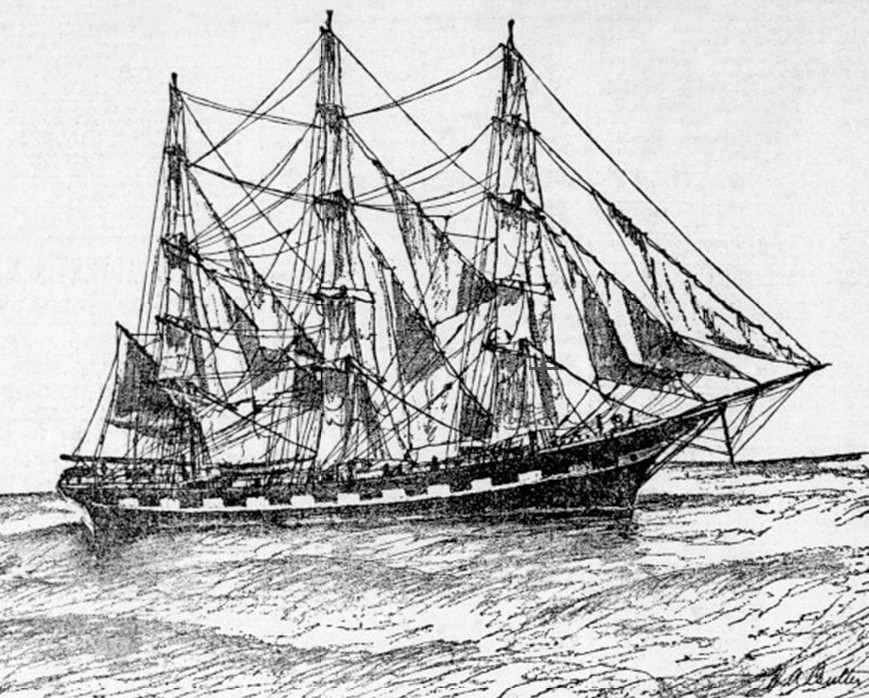 A description follows of the voyage of the Ravenscrag around Cape Horn. Part of it is from a December 1946 article written by Elma (neé Tranquada) Cabral (1909-2011) that is titled "Grandpa Was A Troubadour" in Paradise of the Pacific Magazine (v. 58, n. 12, p. 17-19). This article is based on stories told to Elma by her mother Carolina Dias, who was (1870-1954) a nine-year girl on the ship. Woven into this are remembrances, shown in the black text, that Frances de Harne dictated to her daughters about her experiences on the same voyage. A sketch of the Ravenscrag from an 1898 newspaper article is shown on the right.
A description follows of the voyage of the Ravenscrag around Cape Horn. Part of it is from a December 1946 article written by Elma (neé Tranquada) Cabral (1909-2011) that is titled "Grandpa Was A Troubadour" in Paradise of the Pacific Magazine (v. 58, n. 12, p. 17-19). This article is based on stories told to Elma by her mother Carolina Dias, who was (1870-1954) a nine-year girl on the ship. Woven into this are remembrances, shown in the black text, that Frances de Harne dictated to her daughters about her experiences on the same voyage. A sketch of the Ravenscrag from an 1898 newspaper article is shown on the right.
"It was on the twenty-second day of April 1879, that the Ravenscrag, an English sailing vessel left Funchal in the Madeira Islands with 423 emigrants for the Sandwich Islands--135 of whom were men, with 110 women and children."
"Like a toy in a rushing stream, the Ravenscrag was at the mercy of the elements when they crossed the broad Atlantic. Sometimes, the wind became stubborn, and the ship was in the clutches of the currents which drove her from her course. In her hold, the Ravenscrag carried a small cargo of flour, corn meal, canned milk, onions, dried fish, dried fruit, and legumes; but the passengers never had access to these luxuries. The food was very poor. There was little variety in their daily diet. Each family had a large soup tureen which was filled with a thin soup made from salt pork and beans by the ship’s cook. Corn mush was served for breakfast. Hard tack was rationed at each meal."
"They were always hungry, especially the children. The corn meal and flour became mealy, and the rations were more meager so that resentment kept pace with more hunger. A few of the more aggressive passengers organized a food riot, dumping the mealy cereals overboard. When the Captain appeared they threatened him at the point of a gun. The crew quickly overpowered them. The instigators were tied to the mast of the ship where the cold winds whipped them cruelly. This was the first penal sentence administered at sea."
"It was strange that they did not stop at Rio de Janeiro on the coast of Brazil for the change of diet and the sight of Rio’s beautiful panorama would have done much to lift their moral. But neither grandma or her oldest girls have any recollection of any stop on the eastern coast of South America. Recreational facilities were as meager as their diet. The children were left to their own diversions. Their elders indulged in playing bisca (whist) and singing fados."
They stopped at the southern tip of Argentina, where savages surrounded the ship. Men on board brought out arms and then fed these hairy, big-toothed people crackers, after which they peacefully sailed away in their canoes. Papa said they must have been Patagonians.
"As the Ravenscrage neared the Horn, fierce tropical storms arose, and the cold weather became unbearable to these semi-tropical inhabitants. The days grew shorter and the nights longer. Snow whitened the sails, and the waves rose dangerously high."
The Ravenscrage ran into a storm and a mast smashed. When the ship neared the Horn, *Captain Biggam (British) and the first mate had a fight about whether to sail the Straits of Magellan or around Cape Horn. (To a ten-year old it was an awful fight, with blood shed.) They sailed around Cape Horn.
"On the morning of August 23rd, exactly four months (123 days) after her departure, the tired little Ravenscrag entered Honolulu harbor."
*The captain of the Ravenscrag was probably William Biggam (1830-1891), who was actually Scottish, not British. He was born on April 7, 1830 in the seaside town of Stoneykirk, Wigtownshire, Scotland and grew up to became a sea captain. He married Janet Martin (b. c.1844) on Jan. 29, 1863 in the nearby town of Kirkmaiden, and they eventually settled in the Glasgow suburb of Govan, Lanarkshire to raise their family. He gained employ at some point with the Allan Shipping Line, which had an office in Glasgow, and this was the company that in 1866 financed the building of the Ravenscrag, the ship that Biggam in 1879 sailed to Honolulu Harbor. Although Biggam's home and family were in Govan, he was a sea-faring man, and he died in June of of 1891 while on a voyage, leaving behind his young wife and several children.

The following excerpts are from the August 30, 1879 and September 7, 1879 issues of the Pacific Commercial Advertiser, a predecessor of the Honolulu Advertiser. They describe the arrival of the SS Ravenscrag in Honolulu, Harbor. Both issues of the Advertiser are availble online at the Chronicling America website of the Library of Congress.
"ARRIVAL OF IMMIGRANTS. - The British ship Ravenscrag . . . arrived on Saturday the 23rd, 154 days from Liverpool, including a stay of twenty days at Madeira. From that island, she brings a total of 423 souls - 135 men, 115 women, and 178 children."
"The immigrants are all healthy, hearty-looking people and will prove a valuable acquisition to our population - a real "hoonulu lanui” [a very important day] - for they have come to stay. During the passage three children died and five were born. We understand that about all the male immigrants have been engaged as laborers on the plantations or otherwise."
"The Board of Immigration, of which the Minister of the Interior is President, has had its time and attention quite fully occupied during the past week, in providing for the wants of these people and in arranging for their future settlement."
"It will be noticed that considerable more than the stipulated proportion of women and children (40 per cent) composed this lot of immigrants. This may be somewhat embarrassing in the outset, but will be in the end we are persuaded prove advantageous to the country. The people are nearly all poor, but thrifty. We have reason to doubt the tales that are told of the $7000 and $4000 "solid cash" men, among them. Such men would not readily leave Madeira." (Aug. 30, 1879, p. 3)
* * * *
"THE PORTUGUESE. - The immigrants by the Ravenscraig, are engaging readily as house servants and plantation hands, generally for 2 years, with wages averaging $12 per month for men, and $6 for women, and with advances varying from two to four months wages." (Sept. 6, 1879, p. 3)
On board the Ravenscrag were three cabinet makers - Manual Nunez, Jose do Espirito Santo and Augusto Dias - each of whom in one source or another is credited with adapting a small, four-stringed Madeiran instrument called the "braquina" into that Hawaiian musical institution known as the "ukulele".

Although Frances' father Clement was led to believe that he would be employed in Hawaii as a cabinet maker, he and his family ended up working on a sugar plantation, of which there were several in the North Kohala district of the big island. They may have worked at the Halawa Plantation, which was owned by Charles Brewer and Company, or at the nearby Kohala Sugar Company, which was owned by Rev. Elias Bond. Below is a list of plantations and mills operating in 1892 in North Kohala (from Polk's Directory and Hand-book of the Kingdom of Hawaii, 1892, p. 437-430). The Hawi and Union Mills were the two largest.
Clement would have been fortunate if he worked for the Kohala Sugar Company, which had been founded in 1862 by Rev. Elias Bond (1813-1896) to support his church and schools. Bond disapproved of the slave-like labor conditions of other plantations, so his was the most humanitarian one to work for. This, and the fact that his company profits allowed Bond to become one of the largest benefactors to other missions in the Hawaiian Islands, led to his company being called the "Missionary Plantation". Bond's mill, which produced sugar from 1863-1973, was located downhill from his homestead, and near the Saint Ann Catholic School at Halaulu where Emil de Harne is believed to have been a teacher.
Although later Portuguese immigrants had to sign contracts before they left their homeland, which meant they arrived in the islands bascally as indentured servants, those who came on the Ravenscrag were free men and women who had paid $80, probably per family, for their passage to Hawaii. They were under no obligations, but most most nonethelss were ultimately persuaded to sign contracts. An example of an immigrant workers contract of the times indicates that Clemente would have worked long hours for low wages in order to pay back an advance that he would have received if he did sign a contract.Frances’ brother Manuel attended the school where Emil de Harne taught, which was almost certainly the Saint Ann Catholic School at Halaulu (near Halawa). It was there that Frances and Emil met, and they were married on August 28, 1886 in North Kohala, when Frances was almost 18-years old, and Emil at age 38 was more than 20 years her senior. They went on to have several children, all born in the North Kohala district. Their first child, Mary, was probably born on either the Halawa Plantation or the Missionary Plantation, whereas the others were likely born at Emil and Frances' Hualua Gulch homestead, which was near the town of Hawi.
MARY (1888-1980), who married Joe Walsh and had two children.
JOSEPHINE (1894-1957) who married Tom Jones and had two children.
JOSEPH (b. 1895), who died an infant.
JOSEPH (1896-1897), who died an infant.
FRANCES (1897-1971), who married Frank Betz and had four children.
CLEMENT (b. 1899), who died an infant.
PAUL (1900-1981), who married Emma Davis and had seven daughters.
MAURICE (1902-1982), who married Helen Nichols and adopted twin daughters.
EDWARD (1904-1982), who married Edna McNicoll and had two sons.
ALICE (1906-1969), who married Ulysses Chelli and died without issue.
AN UNNAMED CHILD (b. 1908), who died an infant.
HELEN (1909-1991), who died single.
ELEANOR (1911-1995), who married Colonel Douglas Dwyre and had five sons.
Emil, his wife and daughter Mary, who was about two years old then, moved to a homestead they bought at Hualua gulch, which is just west of Hawi and about nine miles from Halawa where Frances’ family lived. Their home was located in a part of Hawi that today is known as the Hualua homesteads. The house had been torn down, and the land returned to jungle when some of their descendants in 1978 visited the site. Today there are new homes built there as well. Emil was offered a job (principalship?) at Sprecklesville, Maui. Frances had to stay on their homestead for several years or forfeit it . Emil was finally transferred to Honomakau Public School, a short distance east of Hawi, where he was principal for many years. Papa was very much liked as a teacher and there is an old pupil of his who always tells me what a very good teacher he was; and another pupil who tells me what a fine family we were, and he wants to hear news of us.
Emil and Frances originally occupied their Hualua Gulch homestead about 1890, back when the islands were still part of the Kingdom of Hawaii. Land records then show that on Feb. 21, 1895 Emil acquired from the Land Office of the Republic of Hawaii an actual patent (i.e. a deed) to 7.35 acres (Lot 01 - Grant 3737) in the Hualua Homesteads (Carton no. 42) on the southwest side of Hawi. Most likely, he had to show his previous occupation, make improvements to the property, and pay some sort of nominal price per acre, which was the same general process for acquiring homesteads in the United States. His father-in-law Clemente G. Camacho on the same date aquired the adjacent lot to the south (Lot 02 - Grant 3738) of 7.15 acres. However, there is no evidence that Clemente and his wife Anna ever occupied their lot, which indicates that they probably acquired it for the benefit of their daughter and son-in-law. Of course, when Hawaii was annexed to the United States in 1898, all land titles from the Kingdom and the Republic remained valid. Emil's lot today corresponds to a triangle of land between Maliu and Hualua Roads in Hawi, where they intersect with the south side of the main highway (Route 270 - Mahukona Road). The modern street address for the site of the now demolished de Harne home is 55-505 Maliu Rd.Old topographic maps from 1900 and 1930 show that the SW corner at the back end of Emil's lot was also the site of a catholic church. This was possibly one of the sites for the Church of Our Lady of Victory, which had been founded between 1865 and 1875 by the famous Father Damien (who is now the patron saint of Hawaii), but it was replaced in 1905 by the first building for the Sacred Heart Church of Hawi. The present day church, which occupies a building dedicated in 1925, is located to the east of the de Harne homestead, and closer to the Hawi town center.
Although Emil de Harne during the 1890s was well established in his career as an educator, he also served in numerous official and semi-official capacities:
- JULY, 1890 - Emil de Harne - Granted Commissioner of Agriculture for Port and Collection District of Mahukona, Hawaii.
- SEPTEMBER 1894 - Emil de Harne - Appointed teacher at the Honomakau School in the North Kohala District.
- OCTOBER 1894 - Emil de Harne - Granted commission as an agent to grant marriage licenses in the district of North Kohala, Hawaii.
- NOVEMBER, 1895 - Emil de Harne - Asked for a license to distill spirituous liquors at the intersection of Mahukona, Hanoipy and Government main roads in North Kohala. Refused. The terms and conditions are such, that in the near vicinity of a Port of Collection or a Custom House, would be of doubtful propriety. The restrictions are such that unless conveniently located, the establishment of such a distillery might prove costly if not a failure. [Although Hanoipy Road no longer exists, this description sounds as if Emil's establishment would have been located in the town of Halawa, probably not far from the home of Emil's in-laws Clemente and Anna.]
- MARCH, 1897 - Emil de Harne - Asked to canvas orders for portable railroads in Hawaii. The soliciting of orders to furnish goods, wares, or merchandise of any description by the agent of a firm abroad, would be classed under the heading "commercial agents" and would require a license fee of $250 for the island of Hawaii.
- OCTOBER 11, 1899 - Application for appointment as commissioner to the Paris Exposition.
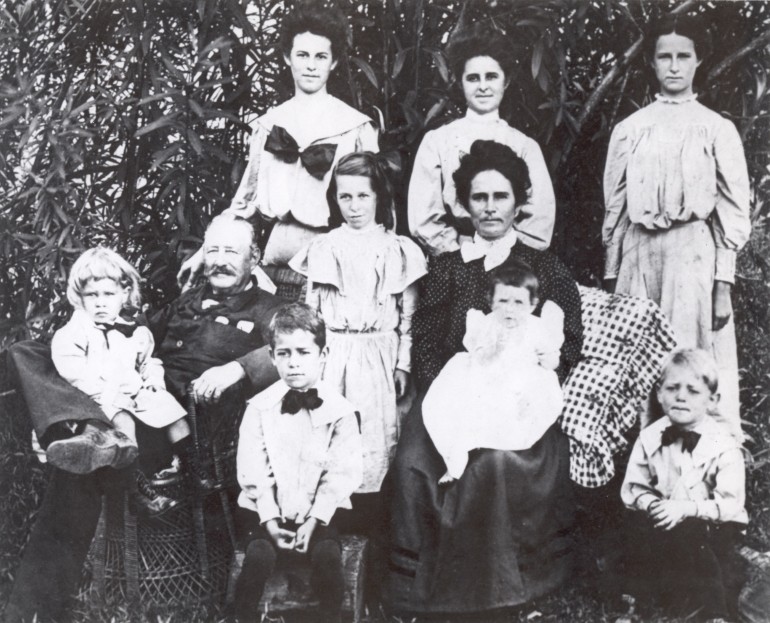
Photo of the de Harne family taken in 1906 at the Hualua homestead near Hawi on the Big Island.
(Back Row, l-r) Louise, Mary, Josephine; (Middle Row, l-r) Emil (father), Frances (daughter), Frances (mother);
(Front Row, l-r) Eddie, Paul, Alice, Maurice. Mising are Helen and Eleanor, who had not been born yet.
After Mother’s marriage, she worked hard on the homestead supervising the planting of sweet potatoes, all sorts of vegetables, and fruit trees. Josephine kept house. She loved to make pies: mulberry, papaya, etc. I helped Mama kneed the bread and bake it in our wood stove. Sometimes, she used the Portuguese oven which was at the back of the kitchen. She usually had a poor neighbor bake the read for her as it was very hard work. We had pigs and chickens to feed, and a cow and horses. The hired hand did this hard work. Mama made good money from the farm. The laborer took the produce to Hawi plantation, and he always came back with an empty cart and cash.
Papa bought the seed from different seed farms in the mainland--kept track of the seasons in which to plant the seeds, etc. He also kept the books. He was not a well man, and he became deaf in his old age. He had a very serious accident when they were married. The roads were very, very poor in Kohala. While driving to Halawa down a steep gulch, the horse stumbled--Mama jumped out, but papa tried to prevent the horse from breaking its legs by holding the horse back. He saved the horse, but he was badly hurt and became deaf later on - and had to retire from teaching.
Afterwards, he opened up the Hawi Post Office. Paul and Josephine ran it for him.
Paul was given a calf by grandfather Camacho. the calf was put into a ranch (Maulio) near our home. Every time it had a calf, cowboys brought it home, and Paul and Mother milked it. This happened three times. It was sold when the family moved to Honolulu.
Grandfather Camacho died on March 26, 1906 in Halawa after an illness of several months, and he is buried in the old Catholic Cemetery in Halawa. The old Halawa Church has been torn down, but the cemetery remains. His tombstone is a white cross with an inscription that reads "Clemente Gomes 1839 1906". The U.S. Census of 1900 indicates that neither he nor his wife could speak English or Hawaiian.
After grandfather Camacho died, grandmother Camacho came to live with us. She was very old, and had several strokes. In the last months, she was bed fast--an awful burden on mother. She died in 1913 or 1914, about 80 years old. She was a "holy soul" and sang religious songs and poems. Paul still remembers some of the p30ms she used to recite. I learned to understand Portuguese from her but never to speak it. She learned to read as a girl so she could read her prayer book in Portuguese. She was short, plump, and dark complexioned. She said her ancestors came from Castile. Her people were wealthy and important.
Grandmother Camacho died on March 30, 1914 at the Hualua homestead, and is buried in the old Catholic Cemetery in Halawa in a grave behind that of her husband Clement (see middle photo below). Her tombstone is a white cross, similar to her husband's. The inscription on it reads "Anna F. Clement Born 1832 Died 1914". The U.S. Census of 1900 indicates that she was born July, 1829, and her baptism record in the Madeira Regional Archives shows July 17, 1830 to be her birth date, which indicates that her tombstone inscription is incorrect.
On August 15, 1914, the whole family of ten children moved to 1245 Wilder Avenue, Honolulu. Mother decided the children had to be educated, and the only good schools were in Honolulu. It was a good move, but she missed her homestead and all of its beauty--the fields of corn, vegetables, and hundreds of trees, bushes, flowers, etc. Emil with 8 of the 10 de Harne children left Hawaii on the steamer "Mauna Kea", and arrived at 6:15am on August 15, 1914 in Honolulu. Frances and daughters Mary and Louise were not with them, as they were already in Honolulu. They whole family moved into a two-story house located at 1245 Wilder Avenue, which is where the Makiki Shopping Village is today, between Liholiho and Kewalo Streets. It is about 3/4 mile NE of the King Street Cemetery where Emil de Harne is buried. The house stood until April 22, 1966 when it burned to the ground, but it was vacant at the time, daughter Helen having sold it a couple of months earlier to a developer who planned to tear it down anyway. It is thought that kids playing with matches in the empty house caused the fire. The site today is a parking lot that in 2016 had Peppas Korean BBQ on one side and the Maikiki Nails manicure shop on the other.
For the sake of her three sons, Mama gave up her farm as she decided that they had to have an education. Of course, Papa was very ill, and she was getting old and wanted to have her daughters settled. Papa was one of the first teachers to be pensioned. He received thirty dollars per month, but that stopped when he died. So we had some very lean years. (Emil de Harne was voted a pension by the Hawaii State Legislature in Act 113, which was passed March 17, 1915. Subsequently, an amount of $720 is reported to have been paid out for said pension in the state budget report of 1917.)
On November 10, 1918, the day before World War I ended, Emil died after a long illness. He was buried on Armistice Day at the old Catholic Cemetery on South King Street. Frances died on December 22, 1957 and was buried near daughter Louise at Diamond Head Cemetery, when she was about 90 years old. Her sister Mary Clement Gomes is buried nearby. Mary never married, and died on July 14, 1937 in Honolulu. Francis' and Mary's brothers Manuel and Joao both married, they both had children, and both have many descendants living today. One brother went by the name of Manuel Gomes Clement and the other by John Gomes Clement. Manuel died on August 3, 1949 in Hononlulu, and his brother John died on June 16, 1944 in Honolulu also. Both are buried in Diamond Head Memorial Park, the same cemetery where their sisters rest.
REFERENCES:
 The documentation for many of the dates and places listed in this history are found in the Ancestry.com online databases (subscription required).
The documentation for many of the dates and places listed in this history are found in the Ancestry.com online databases (subscription required).Grave and burial locations where known are listed with tombstone photos (when available) on

Hawaii Burial Archives. This source has a list of many tombstone inscriptions from the island of Maui, as well as a list of Maui cemeteries.
Hawaii Genealogy Indexes - Ulukau Hawaiian Electric Library - Includes civil records of Marriages from 1832 to 1929. However, the earlier records are not complete.
Hawaii State Digital Archives - Land Index, Passenger Manifests & Land Index. The Portuguese Passengers Manifest Index is particular useful and in made up of index cards that represent the harbor master's records for passengers arriving in the Hawaiian Islands.
Hawaiian Suger Planters Association (HSPA ) plantation records. These records include Cultivation Contracts with individual immigrant laborers, as well as Personnel and Payroll Records. They are available in the Hawaiian Collection at the University of Hawai'i at Manoa Library.
Husted's Honolulu-Hawaiian Directories. Many of these directories are also available on Ancestry.com.
Interviews with James F. Clark and Helen Rachel de Harne (neé Nichols) provided much information on the de Harne branch of the family. Also, email correspndances with Liz Seeley answered many questions on the family and descendants of Frances de Harne's younger brothers Manuel Gomes Clement and John Gomes Clement.
Jones, Josephine de Harne, written 1916-c.1922, Diary: family papers, 3 p.
Newspaper Clippings (including obituaries) from family scrapbooks and the online resources listed below.
Knowlton, Edgar C. (1993), "Portuguese Immigrants to Hawaii", Maui Portuguese Cultural Club, Kahului, HI, 434 p.. An index of the passenger manifests of ships that from 1878 to 1913 brought Portuguese immigrants to Hawaii. Available from the Maui Portuguese Cultural Club. There is also a copy at the LDS Library in Salt Lake City (call no. 996.9 W2), and as well as at the Portuguese Genealogical Society of Hawaii at 1616 Liliha St., Suite 308 in Honolulu, HI (phone number 808-841-5044, mailing address = 99-077 Hokio Place, Aiea, HI 96701, Dan Nelson - president), and another copy at the Hawaii State Archives.
Madeira Government Regional Archives. There are several databases on this site, with the most useful being the ones that are listed below. Unfortunately, the site can be unavailable for days at a time. An alternate site that has scans for some of the marriage and baptisimal records is Tombo.pt, which is an index to all available Portuguese parish records. However, this site does not have at this point links to any scans for the Monte and Sao Roque parishes of Funchal.
- Baptisms from 1860 to 1911
- Marriages up to to 1911
- Passport Records from 1872 to 1910
- Digital Collections (images and books) of the Arquivo Regional da Madeira
The Genealogical Library in Salt Lake City does have scans of the Maderia Archives on microfilm, and these can be ordered and viewed at a local Family History Library. For more information please refer to the FamilySearch.org website.
Photographs of Madeira from the late 1800s give a flavor of what the Madeira Islands must have been like when Frances de Harne lived in the late 1870s as a little girl. I was able to find three collections in the summer of 2015 when I last looked to see what could be found online.
- Historic photos of old Madeira, with views primarily of the city of Funchal and its harbor.
- Views of old Madeira from an old souvenir book published about 1880.
- Views of the Island of Porto Santo, which is located about 27 miles from the main island where Frances de Harne was born.
Portuguese Roots Database maintained by LusaWeb. Includes Ships Manifest records and other resources.
Ship passengers manifest and arrival records (Card no. 137) for HMS Ravenscrag for Clemente Gomes Camacho and family (on file at the Hawaii Historical Society and Hawaii State Digital Archives). Also Card No. 161 for arrival of the family of his brother-in-law Agostinho Ferreira.
Relatives of Frances de Harne, with separate sections on her siblings and her cousins.
Walsh, Mary de Harne, written in the early 1960s, Historae de Harne: family papers, 5 p.

